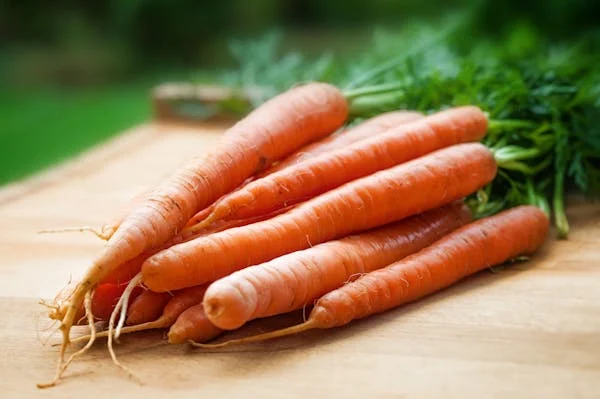In the pursuit of a healthier lifestyle, many of us turn to what we perceive as “healthy” foods to aid in our journey towards weight loss or maintenance. However, it may come as a surprise that some of these seemingly virtuous choices can actually contribute to weight gain. While these foods may offer nutritional benefits, they can also pack a caloric punch that sabotages our efforts. In this article, we’ll delve into five such foods that, despite their health halo, might be hindering your weight management goals.
1. Granola
Granola has long been touted as a nutritious breakfast or snack option, praised for its high fiber and whole grain content. However, this crunchy mix of oats, nuts, seeds, and dried fruits can also be alarmingly high in calories and added sugars. Transitioning to an active voice, it’s crucial to recognize that while granola can be part of a balanced diet, its calorie density demands portion control. Additionally, store-bought varieties often contain hidden sugars and unhealthy fats. Opting for homemade granola allows for better control over ingredients and portion sizes.
2. Smoothies
Smoothies have gained popularity as convenient and nutritious meal replacements or snacks, especially for those with busy lifestyles. However, their perceived healthiness can be deceiving. Many store-bought or café-made smoothies are laden with added sugars, fruit juices, and syrups, significantly increasing their calorie content. Even homemade versions can become calorie bombs when excessive amounts of high-sugar fruits, sweeteners, and calorie-dense add-ins like nut butters or full-fat yogurt are used. To keep smoothies weight-friendly, prioritize vegetables, limit fruit portions, opt for unsweetened bases like water or unsweetened almond milk, and moderate high-calorie additions.

3. Avocado
Avocado has risen to superstardom in the realm of healthy eating, praised for its heart-healthy fats, vitamins, and minerals. However, its caloric density can catch many by surprise. While the monounsaturated fats in avocados offer health benefits, they also contribute a significant number of calories. Transitioning to an active voice, it’s essential to practice portion control when incorporating avocado into meals. Eating half or a quarter of an avocado can provide its nutritional benefits without tipping the calorie scale. Moreover, be mindful of how avocado is used in dishes; excessive amounts in salads, sandwiches, or as a topping can quickly add up in calories.
4. Dried Fruit
Dried fruit is often regarded as a convenient and nutritious snack, offering the concentrated sweetness and flavor of fresh fruit in a portable form. However, the dehydration process removes water, concentrating natural sugars and calories. As a result, even a small handful of dried fruit can pack a significant caloric punch. Transitioning to an active voice, it’s crucial to exercise portion control when consuming dried fruit, treating it more like a sweet treat than a staple snack. Additionally, be cautious of added sugars in some commercially available dried fruit products. Opting for unsweetened varieties and pairing dried fruit with protein or healthy fats can help mitigate its impact on blood sugar levels and hunger.

5. Nut Butters
Nut butters, such as peanut butter and almond butter, are celebrated for their rich flavor, satiating protein, and healthy fats. However, their energy density can make it easy to overconsume. Transitioning to an active voice, it’s important to be mindful of portion sizes when enjoying nut butters. While they can be a nutritious addition to meals and snacks, spooning them straight from the jar or liberally slathering them on toast can quickly escalate calorie intake. Opt for natural nut butters without added sugars or hydrogenated oils and measure out servings to avoid unintentionally consuming excess calories.
In Conclusion: Beware of the Calorie Trap
In the quest for healthier eating habits, it’s essential to approach so-called “healthy” foods with discernment. While foods like granola, smoothies, avocado, dried fruit, and nut butters offer nutritional benefits, their calorie density demands moderation and portion control. By being mindful of serving sizes, choosing whole food options, and paying attention to ingredient labels, you can harness the health-promoting properties of these foods without falling into the calorie trap.
FAQs
Q: Can I still enjoy these foods while trying to lose weight?
A: Absolutely! The key is moderation and portion control. Enjoying these foods as part of a balanced diet can provide valuable nutrients and satiety. Just be mindful of serving sizes and how they fit into your overall calorie intake.
Q: Are there any healthy alternatives to these calorie-dense foods?
A: Yes! For example, swapping out traditional granola for a lower-calorie option like air-popped popcorn or plain Greek yogurt with fresh fruit can help reduce calorie intake. Experiment with different ingredients and cooking methods to find alternatives that satisfy your cravings without sabotaging your weight management goals.
Q: How can I determine appropriate portion sizes for these foods?
A: While individual calorie needs vary, a general rule of thumb is to stick to recommended serving sizes as indicated on packaging or nutrition labels. Additionally, using measuring cups, spoons, or visual cues can help you gauge appropriate portions and avoid overeating.




